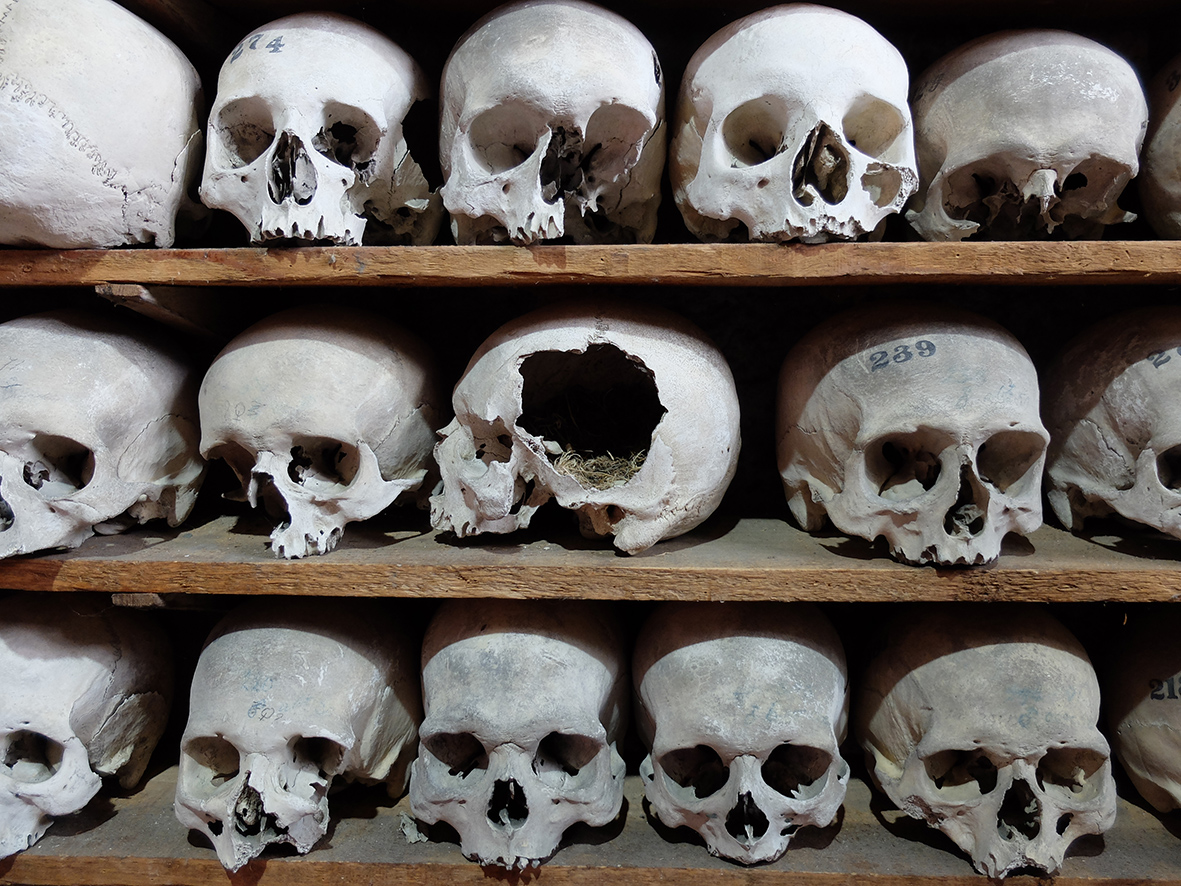15 Oct Ossuary
 An ossuary is a place to store bones, from the latin ‘os’ meaning bone. There are many places around the world where bones are stored, often in boxes, in places of faith – Zoroastrian, Catholic, Greek Orthodox and Jewish for example. There are many crypts and catacombs which hold human remains.
An ossuary is a place to store bones, from the latin ‘os’ meaning bone. There are many places around the world where bones are stored, often in boxes, in places of faith – Zoroastrian, Catholic, Greek Orthodox and Jewish for example. There are many crypts and catacombs which hold human remains.
The Church of All Saints at Sedlec in the Czech Republic and The Skull Chapel in Kudowa, Poland are decorated in baroque style. Mojmir Horyna speculates about the meanings of such places in ‘Momento Mori’, a book of photographs of the Ossuary at Sedlec.
“The very building of the ossuary, as a place where the remains of the unknown dead were laid out in patterns, expressing hope in the resurrection, is also a fundamental expression of something else: it is an operation of human solidarity in the history of salvation, a solidarity which stretches across generations and centuries, which demolishes the empire of death and breaks through the temporal boundaries of the individual human life.”
We came upon the ossuary in the crypt of St Leonard’s Church, Hythe, in Kent by chance. It is small in comparison with some of the larger European ones, but a significant collection of around 1,200 skulls and includes the remains of around 2,000 people. The collection was first recorded in 1678 as ‘an orderly pile of dead men’s bones’, although its exact origin is undocumented and many of the bones date much further back. It is housed in a small annexe of the church. There are four arched bays. Skulls rest on shelves to the ceiling, making an audience of ancestors peering at the visitors who have come to look back at them.
A large carefully balanced mound of femurs interspersed with skulls takes up the volume of about 2 cars. Some of the irresistible rounded foreheads and ball joints have been polished smooth by hands passing over the centuries. In the 21st century scientific inspection seems to take precedence over veneration. The focus of this gathering of the dead has become a library for study. Students investigate causes of death, ways of life, nutrition and dental decay.
It is easy to separate myself from these long dead creatures. I see their individual characteristics as part of a decorative pattern. I notice my curiosity at their differences – youth, age, bony protrusions, blunt-force traumas. The evidence of a nest lined with dried grass in one (bird or mouse?) delights me.
But there is an important lesson here amongst the dust, spiders and creeping green mould; a reminder that I too will one day stare hollow-eyed, a momento of a life once lived in solidarity with future beings.



No Comments